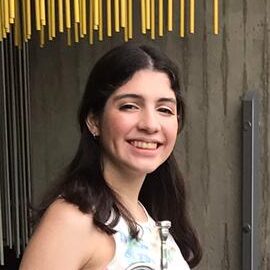Faculty Sponsor: Greg Voth
Abstract: One of the most challenging steps in the 3D reconstruction of complex particle motion in turbulent flows is measuring particle orientation from multiple images. Standard methods involve numerically projecting the object onto multiple cameras and optimizing the orientation to match measured images. However, such methods are limited in scope and fall short when tracking the more complex movements of particles affected by specific lighting conventions. Video game engines have become highly optimized for projecting 3D objects onto 2D planes or “camera views”. Therefore, we utilized Unity, a popular video game engine and its physics engine, to simulate and project the translation and rotation of helix particles through 500 centistokes fluid (a solution of silicon and water). We used Python’s Open CV computer vision library and other calculated camera information to calibrate the three cameras’ exact orientation and position and place the objects associated with the particle in a virtual world. Additionally, we used Unity’s lighting mechanics to simulate the particle’s material and the lighting and shadows projected onto the particle as it moves. Finally, we utilized Unity’s RigidBody physics system to implement the particle’s translation and rotation. By correctly projecting the helix particle onto the different cameras, we could more closely study its movement and simulate more complex processes safely and effectively. Beyond fluid mechanics, these techniques are integral in the movie-making and video game-making processes as an approach to motion capture that uses the video game engine to project virtual objects onto camera images.
Summer-Research-2023-Poster-Final-Version

